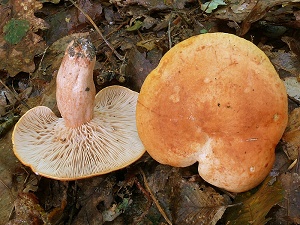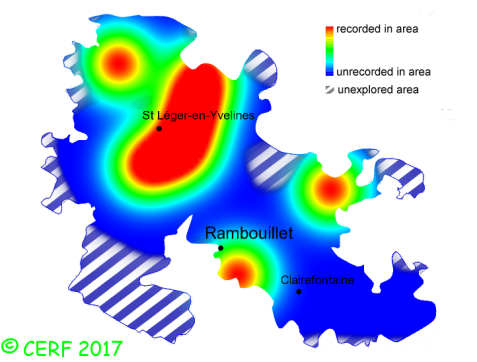| Lactarius fulvissimus Romagn. |
|
|
|
|
|
|
The cap is orange-red to dark brown, paler towards margin, convex then depressed; its margin is smooth to slightly striate then wavy. The cap surface is smooth, a bit greasy to the touch. The stem is orange cream, darker towards reddish-brown at the base, pruinose in the youth, cylindrical or tapering towards base, without ring. The flesh is cream to ochre-pinkish, unchanging; its taste is mild then slightly hot; the odour is of rubber, or like Lepiota cristata, or of shield bugs, much like Lactarius quietus; its texture is grainy (breaking like a chalk stick), exuding when cut an abundant watery to whitish milk, unchanging or turning yellow on the handkerchief in 2 mns. The gills are cream yellowish to orange red, adnate to decurrent . The spore print is cream (D-E). This species is mycorrhizal. It grows in mixed or deciduous woods, on a rather neutral to calcareous soil, with beech, hornbeam, oak, hazel. The fruiting period takes place from September to December.
Chemical tests : none. Distinctive features : orange-red to bright orange cap and stem; white to watery milk, abundant and unchanging, mild then acrid; odour of rubber or bugs Lactarius fulvissimus is quite rare and scattered in the forest of Rambouillet, and is infrequent, more generally speaking . | ||
|
page updated on 14/01/18

